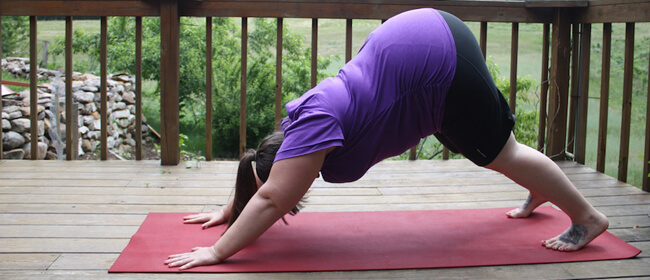Firstly let us assume that we are talking about the people, women predominantly, who want to lose some weight-perhaps as much as a couple of stone. Next let’s assume that they go to one or two yoga classes a week but otherwise don’t do much in the way of physical activity.
Is this you? Do you drive the kids to school before driving yourself to work where you spend most of the day sitting (i.e not expending calories nor using muscles) before reversing the process and finishing up on the sofa each evening?
Of the 168 hours per week, if you are anything like the nations average you probably sleep for 49 of those hours leaving 119, sit behind a desk for 56 more leaving 63, watch TV and/or sit in front of the computer at home for 24.5 leaving 38.5 hours, drive your car for around 14 more leaving 24.5 hours.
If you read my last post you will know that being active for a minimum of 21 hours a week is a good starting point in order to begin chipping away at musculoskeletal and metabolic change. So you have the time its just that somehow you only find a poultry 2 of those 24.5 hours to exercise!
If you spent those 2 hours doing 6 x 20min HIIT (high intensity interval training) sessions per week you could almost be forgiven because at least you would be using the time you were able to find intelligently. But yoga? Seriously, this should be an addition not your sole pursuit. Yes it can facilitate introspection, steady and calm you, no it won’t burn off 2 stone of adipose tissue on your bum and thighs “like Madonna and Sting” And the reason is that it isn’t physically challenging enough.
Now if you overhauled your kitchen cupboards and stopped eating anything that came out of a packet, contained more than 20% fat by calorific volume and enough to boost your metabolism out of its sluggish state AS WELL as spent 24.5hours a week doing yoga then you could expect to see some of the changes you want.
The yogis who sell what they preach will often practice for hours and hours each day, they eat a clean pure well balanced diet devoid of preservatives and additives generally, often they won’t drink alcohol or meat and they drink plenty of water. Their cortisol levels are usually healthy as their day to day stresses are well managed, they wont binge and select low GI and low fat foods.
The actual yoga practice when done at high intensity with great form in most of the styles can be tough but the average overweight female in a UK yoga class isn’t this person and their class probably wont even get them into their aerobic training zone. Added to which there are very many repeated muscle group recruitments in some of these classes at the beginning level.
As a final warning spinal compression, torsion and hyper extension at both lumbar and cervical level seems crazy to us fitness professionals-who take a joint health approach-but there’s who whole nother can of worms to discuss next time….

